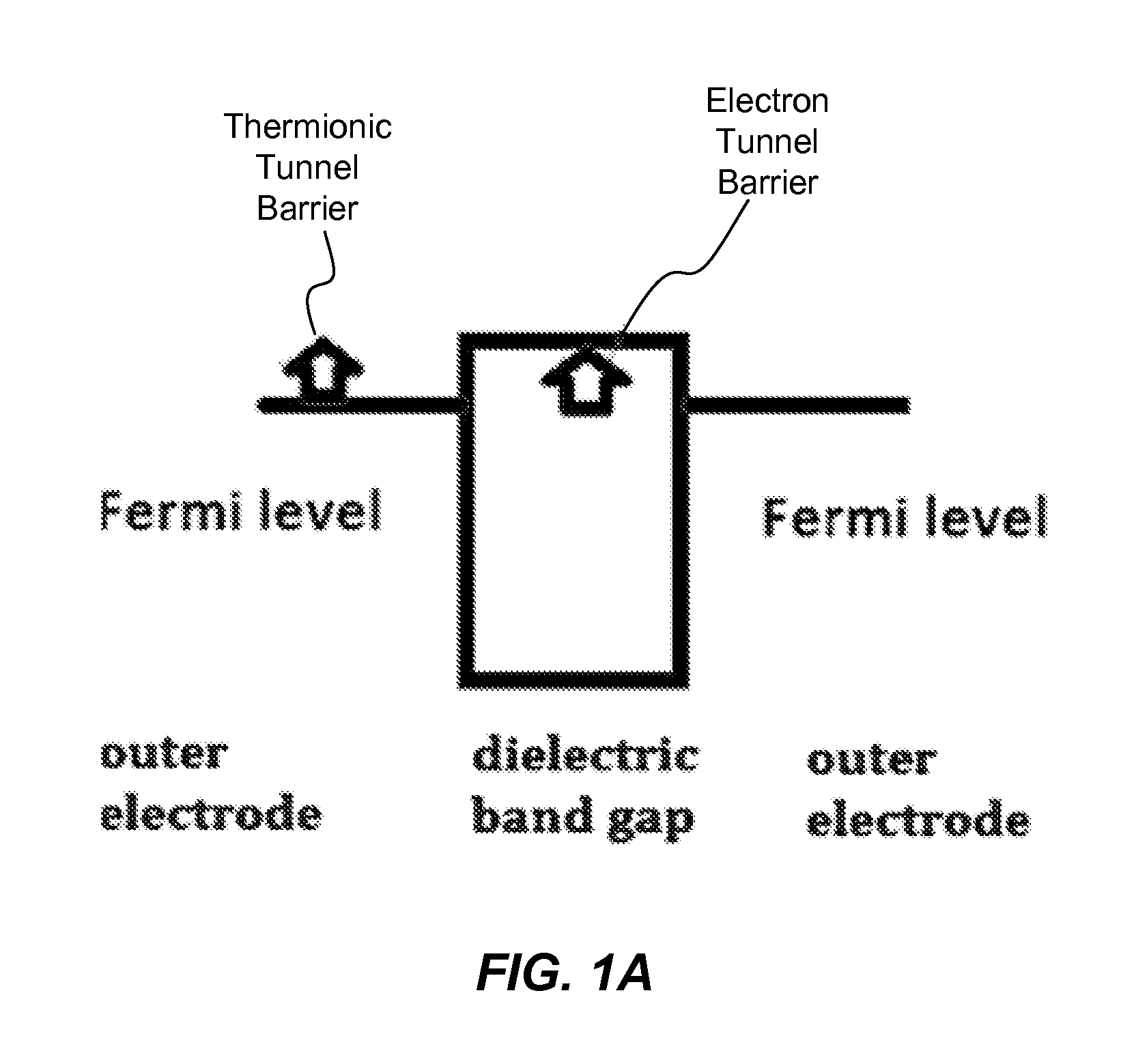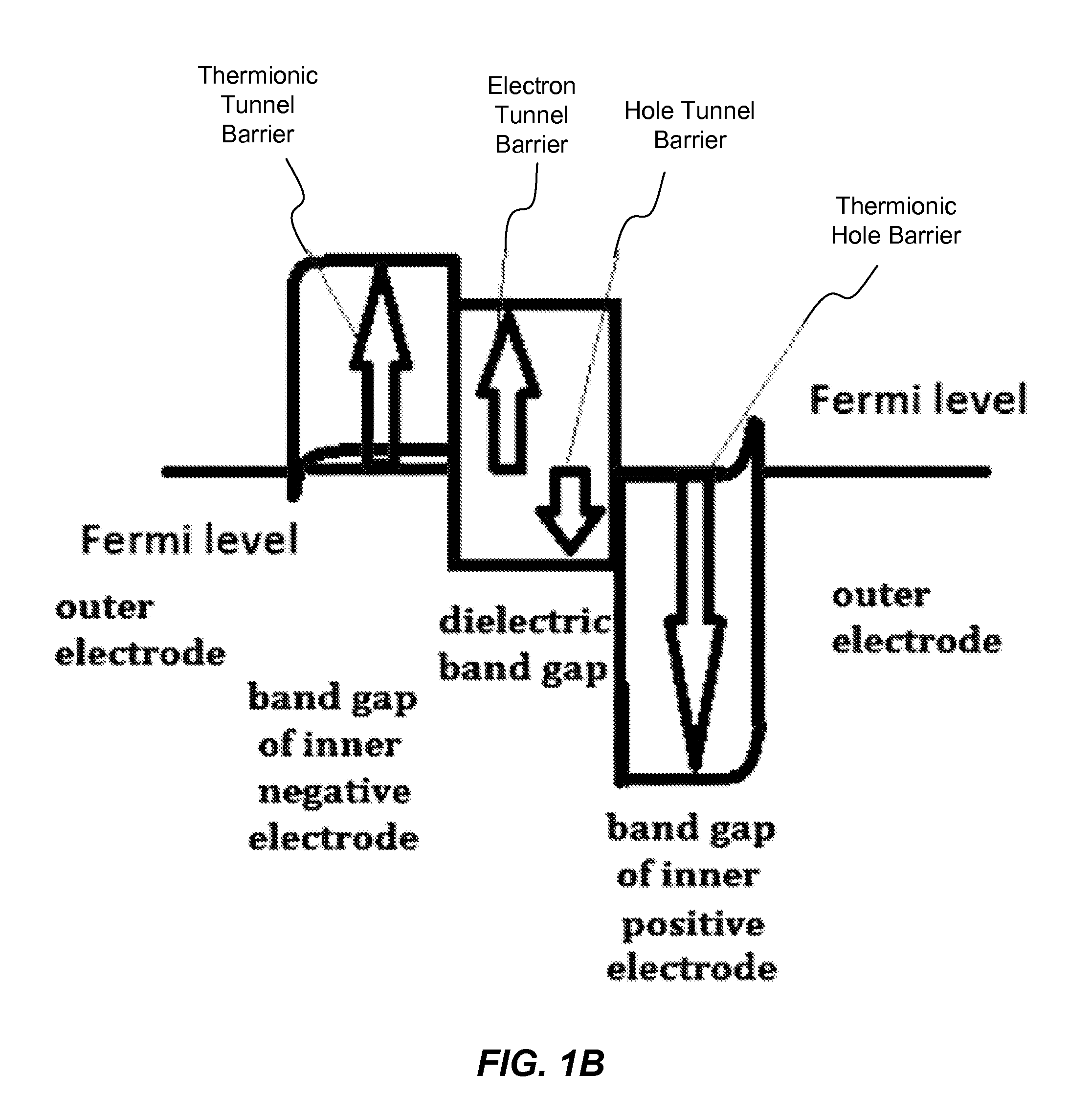Capacitors Including Inner and Outer Electrodes
a technology of capacitors and electrodes, applied in the direction of capacitors, semiconductor devices, electrical apparatus, etc., can solve the problems of increasing leakage, increasing leakage, and increasing the thickness of the electrode, so as to reduce the leakage of the first layer
- Summary
- Abstract
- Description
- Claims
- Application Information
AI Technical Summary
Benefits of technology
Problems solved by technology
Method used
Image
Examples
application examples
[0053]Examples of applications for capacitor stacks include DRAM devices. DRAM memory cells effectively use a capacitor to store charge for a period of time, with the charge being electronically “read” to determine whether a logical “one” or “zero” has been stored in the associated cell. A cell transistor may be used to access the cell. The cell transistor is turned “on” in order to store data on each associated capacitor and is otherwise turned “off” to isolate the capacitor and preserve its charge. More complex DRAM cell structures exist, but this basic DRAM structure will be used for illustrating the application of this disclosure to DRAM devices.
[0054]FIG. 4 is a schematic illustration of a DRAM device 400 including a capacitor stack 408 and a transistor 410. DRAM device 400 may be also referred to as a DRAM cell, while capacitor stack 408 may be also referred to a cell capacitor, and transistor 410 may be referred to as a cell transistor. Transistor 410 may be a MOS transistor ...
PUM
 Login to View More
Login to View More Abstract
Description
Claims
Application Information
 Login to View More
Login to View More - R&D
- Intellectual Property
- Life Sciences
- Materials
- Tech Scout
- Unparalleled Data Quality
- Higher Quality Content
- 60% Fewer Hallucinations
Browse by: Latest US Patents, China's latest patents, Technical Efficacy Thesaurus, Application Domain, Technology Topic, Popular Technical Reports.
© 2025 PatSnap. All rights reserved.Legal|Privacy policy|Modern Slavery Act Transparency Statement|Sitemap|About US| Contact US: help@patsnap.com



